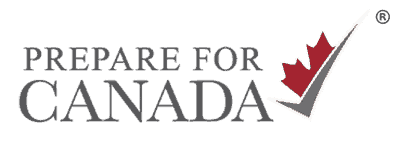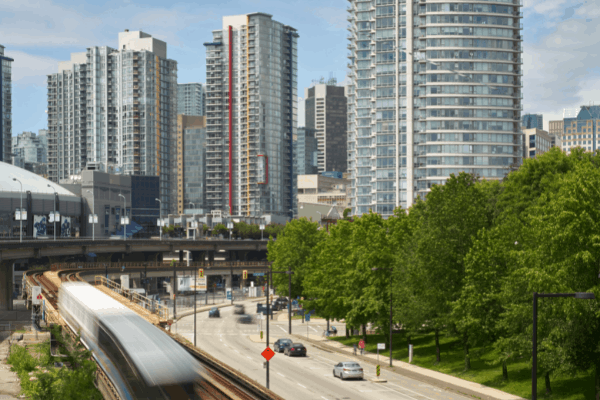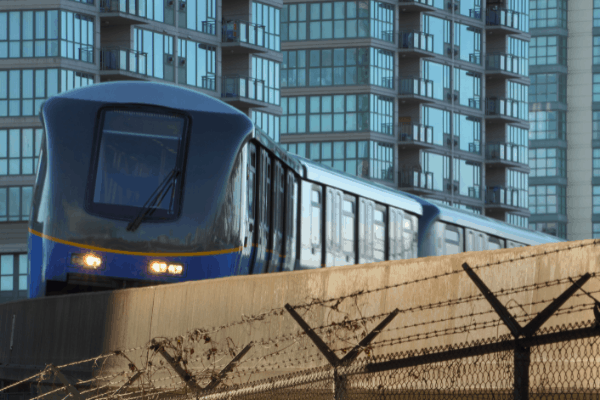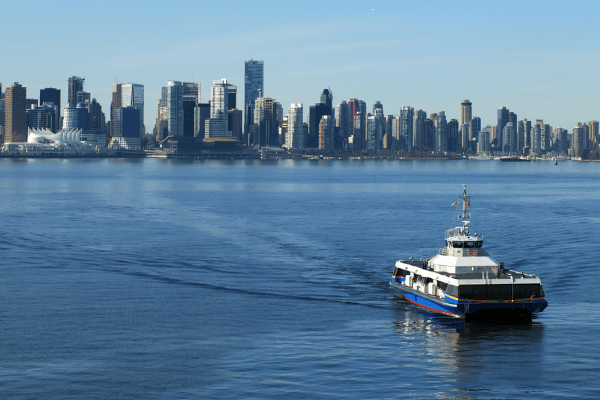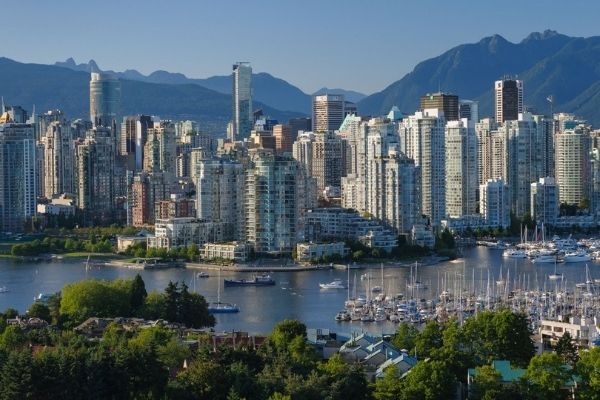
What to Know About Living in Vancouver, British Columbia

Are you thinking about moving to Vancouver? What about other areas in British Columbia or across Canada? Moving to a new country is an exciting time. And it’s a time when you will need to make important decisions. For many new immigrants, Vancouver is the right city. It is Canada’s largest city on the west coast.
It’s wise for newcomers to research cities in Canada before choosing a new place to call home. Does the job market offer opportunities? Are there housing options that fit your budget? How expensive is the cost of living? These questions will help you make the best decision based on your lifestyle needs.
Advertisement:
The City of Vancouver is one of the top destinations for newcomers to Canada, particularly from the Asia-Pacific Region. That’s not surprising as it’s one of the most beautiful, livable cities in Canada and the world. It offers a mild climate, cultural diversity, and impressive natural setting, all found in a growing metropolitan city.
Advertisement:
Vancouver is one of the most expensive cities in the country, it is also the most liveable city. It has plans to become the greenest city in the world through its Vancouverism urban planning design philosophy. There are many reasons why it’s an attractive city for new immigrants. Prepare for Canada can guide you with helpful information about living in Vancouver.
About Vancouver, British Columbia
Vancouver is a large urban city found in Western Canada. It is part of the Lower Mainland area of British Columbia. The city has the third-highest quality of living in the world. It is one of the most diverse cities in Canada. This helps it to attract new residents, tourists, and economic investors.
The city was founded on First Nations territory, and it was built by immigrants from countries around the world. The Fraser Gold Rush in 1858 first drew significant interest in the region. Thousands of people migrated to the area from the United States and New Westminster. The first European settlers made their way to Vancouver in 1862. The City of Vancouver was incorporated in 1886, the same year the transcontinental train made its way to the west. The city is named after Royal Navy Captain George Vancouver.
Vancouver is an international city surrounded by mountains, lush forests, Vancouver Island, and the fourth-largest port in the Americas. It is an outdoor lovers’ paradise and a gateway to adventure.
How Many People Live in Vancouver, British Columbia?
The City of Vancouver has a population of 631,486 (Canada Census: 2016). The larger region, known as Metro Vancouver, has 2,643,431 people. It is the 8th most populated city and the third-largest metropolitan area in Canada. The city has the highest population density in Canada. There are over 5,400 people per square kilometre.
Advertisement:
Thirteen of the province’s 30 most populous municipalities are in Metro Vancouver. They include the City of Vancouver, North Vancouver, West Vancouver, Burnaby, Richmond, Surrey, and White Rock.

How to Find a Job & Build a Career in Vancouver
Vancouver’s Local Economy
Vancouver has a dynamic, highly diversified urban economy with growing knowledge-based sectors and strong global linkages. The city is one of Canada’s largest industrial centres thanks to its location on the Pacific Rim and at the western terminus of Canada’s transcontinental highway and rail routes.
Forestry and mining companies have their headquarters in this city. As well, in recent years, the city has become an increasingly important centre for:
- Digital entertainment and interactive media
- Green economy
- Video game development
- Film.
Vancouver has been coined “Hollywood North” because of its growing film industry and filming locations.
Related Posts:
Best Cities for Software Engineer Jobs & Salaries in Canada
IT Jobs in Canada | Everything Newcomers Need to Know
Sales and Marketing Employment & Job Requirements in Canada
Chiropractors Jobs in Canada | What Newcomers Must Know
Major Employers in Vancouver
Vancouver is home to many large corporations, a strong mining industry, technology, film, and health care industries. Small businesses are considered the engine of the provincial economy.
Some of the top companies in this city are:
- Amazon
- Microsoft
- SAP
- Apple
- IBM
- University of British Columbia
- RBC
- Telus
- Electronic Arts
- Intel Corporation.
Career Pathways in Vancouver
To search for potential job opportunities you can use bcjobs.ca and WorkBC. Working with a recruitment agency is an effective way for newcomers to find work. The top recruiters in Vancouver are Recruiting in Motion, Impact Recruiting, Robert Half, and Randstad Canada. You can also browse jobs in Vancouver here.
Learn more about finding a job in Vancouver:
Getting a Job In Vancouver as an Immigrant
The Vancouver Housing Market
Where you choose to live will have a big impact on your budget. When considering a neighbourhood, look at the amenities in the area, for example, how close are schools, child care, the grocery store, and medical care? How long will the commute take? Is public transit easily accessible? Consider the real estate cost, but also the value a neighbourhood offers your family.
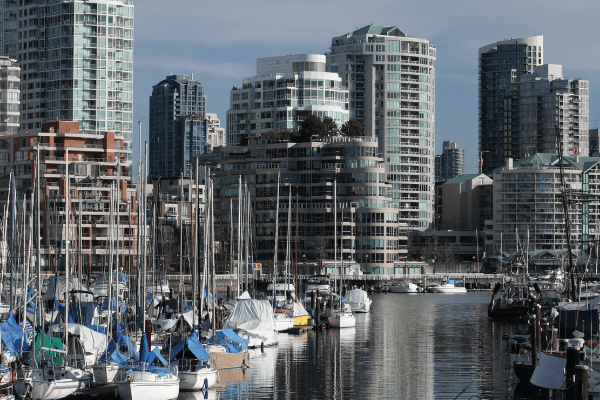
Is Housing Expensive in Vancouver, British Columbia?
Vancouver is one of the most expensive cities in North America. It is the second most expensive city to buy and rent in Canada. Only Toronto is more expensive. And costs keep going up.
While newcomers are attracted to the downtown lifestyle, it comes with high costs. With more affordable housing within the Vancouver metropolitan area, you may want to consider living outside of the city.
Finding a Place to Rent in Vancouver
Vancouver has the most expensive rental rates in Canada. You will find it challenging to find a place to rent for less than $2,000 per month. The average rent for an apartment in Vancouver is $2048 for a Bachelor, $2211 for a 1 Bedroom, $3421 for a 2 Bedroom, and $4973 for a 3 Bedroom. These rates are significantly higher compared to other smaller cities in the country.
Use Rentals for Newcomers to search for available rental units in Vancouver. Here, you can also find current rental prices in Vancouver, which is helpful since rental prices can change often.
You’ll need renter’s insurance to protect your belongings. Most property owners will require you to have this insurance as a term of your lease agreement.
Get more information about renting a home:
Renting in Canada: What Newcomers Need to Know
Most popular Vancouver neighbourhoods
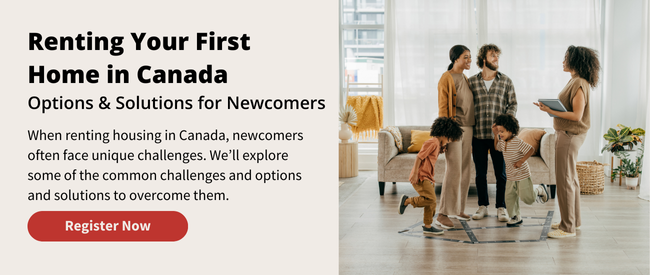
Buying a Home in Vancouver
Finding a home in the Vancouver area can be challenging, especially the closer you get to Vancouver proper. Housing affordability is a huge concern in the region, with many people choosing to live in homes in suburban cities like Coquitlam, Surrey, and Richmond, and commuting to Vancouver for work if necessary.
But, over the last decade, people have been moving even further east as housing prices continue to rise. Or, they are choosing smaller, multi-family dwellings instead of single-detached homes. While newcomers commonly want to live downtown for convenience and lifestyle, home purchase prices are higher. The further east you go, the lower the prices.
According to Royal LePage, the average cost to buy a home in Vancouver is $1,253,300. This is a year-over-year increase of 17.1%. The median price for a single-family detached home is $1,707,900. The median price to buy a condo is $717,200. To buy a home, contact a realtor in the area, who will guide you through the home-buying process. Find out more about buying your first home in Canada: First Time Home Buyer: Newcomer Tips
Driving & Public Transit in Vancouver
Driving in Vancouver, British Columbia
Highway driving is common, but the city has some of the worst traffic congestion in the country. Metro Vancouver’s network of highways is key to connecting communities. Here are the major highways:
- Highway 1 (also known as the TransCanada Highway): runs from the west coast of B.C. through all the communities in Metro Vancouver and beyond to the rest of Canada
- Lougheed Highway (also known as Highway 7) runs from Burnaby to beyond Mission on the north side of the Fraser River
- Highway 91/91A is also known as the Richmond Connector
- Highway 99 (Sea to Sky) is the main route to Whistler.
If you plan to drive, learn about Getting Your Driving License in Vancouver, BC.
Get more information about driving in Canada:
Driving in Canada: 10 Essential Facts to Know
Driving Test in Canada: A Full Guide
Tips for Winter Driving to Ensure Your Safety
Vancouver Public Transit
TransLink runs Vancouver’s public transit system. The extensive transit system connects the City of Vancouver and the surrounding cities and towns in the metropolitan area. The various forms of transit include:
- Buses
- SkyTrain (which connects Vancouver to Surrey and Coquitlam)
- West Coast Express train, a commuter train that runs from Vancouver to Mission (about 70 kilometres from Vancouver)
- SeaBus (hovercraft boats that connect Vancouver to North Vancouver).
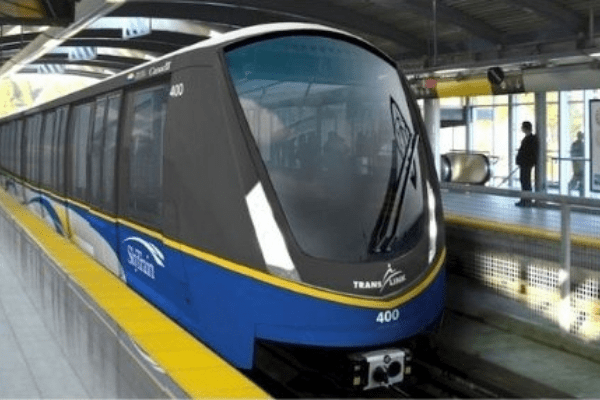
For more details, check out Public Transit in Vancouver | How to Get Around with Ease.
The second busiest airport in Canada is the Vancouver International Airport (YVR) located just 12 km from downtown and accessible by public transit.
Community Support for Newcomers
There are settlement agencies in Vancouver to help new immigrants settle into their new city and country. The main organizations to consider include SUCCESS BC Settlement & Integration, Immigration Services Society of BC, Settlement Orientation Service, and MOSAIC.
Find out more about Services in Canada to Help Newcomers Settle.
Language Support in Vancouver
There are over 190 languages spoken throughout the city, with Chinese being the most widely spoken language outside of English. Residents can get language support through settlement organizations, the Vancouver Public Library, and other community organizations. If you require, you can also get help using language service providers such as CanTalk and LingoStar.
Personal Finance & Banking
An important first step is to set up a personal bank account as soon as you arrive. All local banks have programs to help newcomers open a bank account and get a credit card. You can visit a local bank branch to open a bank account and learn about financial products such as a line of credit or mortgage.
Related Posts:
Top 10 Financial Steps to Take Before You Leave for Canada
Move to Canada | Transferring Cash & Valuables
Open a Bank Account Before Arriving in Canada
Vancouver’s Education System
Vancouver has a strong education system from elementary through to college and university. It has many learning options for kids, including public, Catholic, and private schools in addition to many childcare and daycare options. It has world-class post-secondary institutions for those enrolling in higher education.
Elementary and High School Education
Vancouver has many elementary and high schools to choose from for your child’s education. The Vancouver School Board administers about 76 elementary schools, 17 elementary annexes, 18 secondary schools, 7 adult education centres, and 2 Vancouver Learn Network schools. This includes 18 French Immersion schools and a Mandarin bilingual school.
Post Secondary Institutions
Home to the world-class University of British Columbia (UBC), nationally-renowned Simon Fraser University (SFU), and a wide range of top-notch professional colleges, Metro Vancouver is one of the best places in Canada to pursue higher education.
UBC consistently ranks among the 40 best universities in the world and is among the 20 best public universities. The other public universities are Capilano University, Emily Carr University of Art and Design, and Kwantlen Polytechnic University.
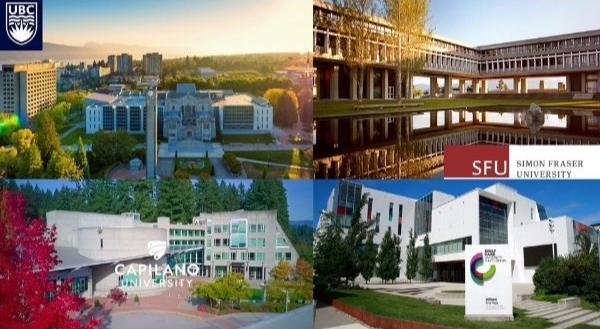
There are five private institutions in the region including Trinity Western University in Langley, University Canada West, NYIT Canada, Fairleigh Dickinson University, and Columbia College.
Vancouver Community College and Langara College are publicly funded college-level schools. They are augmented by private institutions and other colleges in the surrounding areas and offer career, trade, and university-transfer programs.
Read more about education in Canada:
Schooling in Canada | A Look at the Education System
Higher Education Offers Benefits to Newcomers
Where To Get Medical Care in Vancouver, British Columbia
Vancouver Coastal Health offers medical care across its 13 hospitals. The biggest hospitals in the network include Vancouver General Hospital, Mount Saint Joseph Hospital, and St. Paul’s Hospital.
In case of an emergency call 9-1-1. This number is the same no matter where you live in Canada.
British Columbia has a government-funded health insurance plan called the Medical Services Plan (MSP). It is only for British Columbia residents who are Canadian citizens, landed immigrants, or government-assisted refugees. You can get MSP if you’re an international student with a study permit, or if you have a work permit for six months or longer.
MSP pays for health costs such as visits to the doctor, most medical tests, and treatments. But, there are some health costs that are not covered including dentists and physiotherapists. For prescription drugs and services that MSP does not cover, you can pay for added health insurance plans. Third-party health insurance is offered through some employer benefit plans.
How to Find A Family Doctor In Vancouver
Finding a family doctor when you move to a new city is important. Contact HealthLink BC by calling 8-1-1 to speak with a health service navigator. They will provide you with information about finding a family doctor in your community. You may be put on a waiting list. Visit a local walk-in clinic for non-emergency care if you do not have a doctor.
Learn more about health care in Canada: Steps to Access Free Health Care in Canada
What is Day-to-Day Life Like in Vancouver?
Things to Do in Vancouver
Metro Vancouver is a popular destination for outdoor recreation, thanks to its mild climate and proximity to the ocean, mountains, rivers and lakes. So you’ll find world-class parks, including the 404 hectares of prime downtown land that forms Stanley Park, and smaller parks that host recreational facilities, community centres, and special amenities such as off-leash dog areas and skate parks. Vancouver has close to 300 city-run parks, beaches, and gardens.
Within a 20-to-30-minute drive from downtown Vancouver are the North Shore Mountains, with three ski areas: Cypress Mountain, Grouse Mountain, and Mount Seymour. Mountain bikers have created world-renowned trails across the North Shore. And, the Capilano River, Lynn Creek, and Seymour River, also on the North Shore, provide opportunities to white water enthusiasts. For more information on recreational activities in Vancouver, click here.
Public Spaces & Attractions
Vancouver is the perfect combination of big-city living with countless outdoor adventures. There is always something to do and events going on. Some of the most popular attractions with residents and tourists include Canada Place, Granville Island, the Brockton Point Totem Poles, Chinatown, Science World, and the Museum of Anthropology. If you enjoy film and music, you can attend the Vancouver International Film Festival, Vancouver Folk Music Festival, or the Vancouver International Jazz Festival.
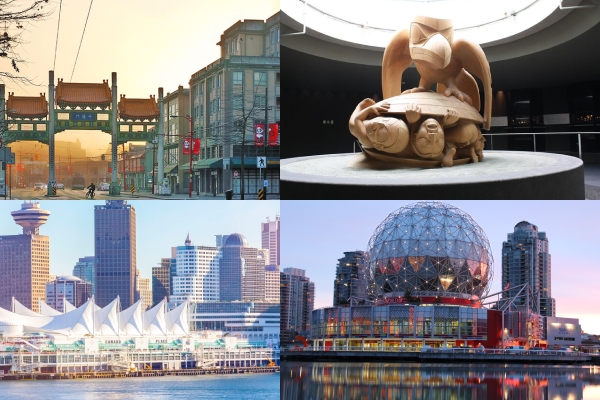
Restaurants & Nightlife
Vancouver has no shortage of world-class restaurants and nightlife. If you are into the theatre, check out what is playing at Arts Club Theatre Company on Granville Island, and Bard on the Beach. If you like to dance or have a drink with friends, Granville Entertainment District has the city’s highest concentration of bars and nightclubs. Gastown and Davie Village are great locations for upscale restaurants and international cuisine.
Nature & Natural Landscapes
Vancouver is known for its mountain ranges and unique natural landscapes that offer many activities. While there are too many to mention some activities include whale watching, skiing at Whistle Mountain, walking across the Capilano Suspension Bridge, or the Stanley Park seawall, the world’s longest waterfront path.
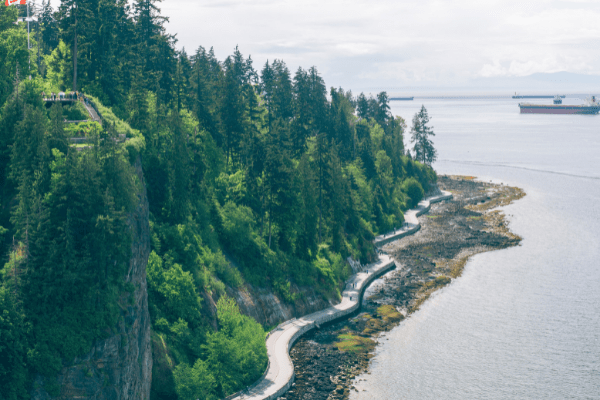
Sporting Events & Concerts
Vancouver is a sports town. It was host to the 2010 Winter Olympics and Paralympics. The city is home to the Vancouver Canucks hockey team, BC Lions football team, the Vancouver Whitecaps soccer team, and the Vancouver Giants of the Western Hockey League.
There are plenty of concert venues across the city and it’s common to find live music and concerts at Rogers Arena, Queen Elizabeth Theatre, BC Place Stadium, and Pacific Coliseum. If you are looking for something more intimate, check out Commodore Ballroom, Orpheum Theatre, or the Vogue Theatre.
Culture & Diversity In Vancouver
Diversity
Vancouver is one of the most ethnically diverse cities in Canada. About 42% of the city’s population are immigrants. This is over 260,000 people. In recent years, about 40,000 new immigrants move to the city each year.
52% of the population are not native English speakers. 16% speak Chinese as their primary language at home. Just over 50% of residents are a visible minority. 27% of the population is Chinese. This is the largest minority group, followed by South Asian (6%), Filipino (5.9%), and Southeast Asian (2.8%). 2.2% of the population is Aboriginal.
As a diverse city, Vancouver hosts many annual cultural celebrations including Lunar New Year, Black History Month, Eid, Diwali Festival of Lights, and other events and festivals.
Worship
Just over 40% of residents are Christian. Close to 7% are Sikh and 3.5% are Buddhist. Another 40% of the residents in Vancouver have no religious affiliation. Check here to find churches and other places of worship.
The Weather in Vancouver
Vancouver’s oceanic climate is the most moderate in Canada, with little snow. While Vancouver is one of the warmest cities in Canada, it’s known for rainy weather. The wettest months are November and December. In the summer, the temperature can reach the high 20s and July and August are the driest months.
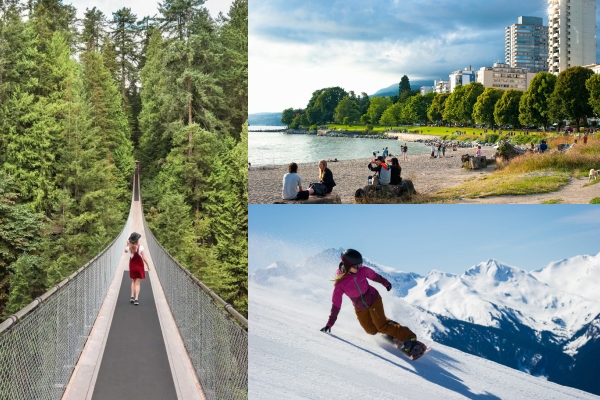
Occasional cold arctic outflows can arrive in the winter that can last a week or more and lead to snowfall.
The annual average temperature in the region is 11°C and is like other coastal cities like Seattle, Amsterdam, and London (UK).
Common Questions Immigrants Ask About Living in Vancouver
Is it Expensive to Live in Vancouver?
Yes, it’s one of the most expensive cities in Canada. It has exceptionally high real estate prices, rental prices, and cost of living. So, while it’s more affordable to live in the surrounding suburbs, even then, housing costs are still much higher than in other areas in Canada.
Is Vancouver Good for Immigrants?
Vancouver is a top destination for new immigrants to Canada. It is the most popular location for immigrants from China and other Asian countries. Its natural beauty, mild climate, and strong economy make it attractive to newcomers.
What are the Pros and Cons of Living in Vancouver?
There is no other city like Vancouver. You can look out your window and see the mountains in the distance from your urban home. It offers everything you want out of a modern international city. The economy is strong. It has world-class post-secondary institutions, and its natural wonder speaks for itself.
There are some drawbacks. The city is very expensive, it has considerable traffic and its homelessness issues are well documented. Weigh the pros and cons to decide if Vancouver is the right city for you.
For more information, tools, and free webinars about living in Canada visit our Settling in Canada resource page. We’ll help you to settle successfully!
